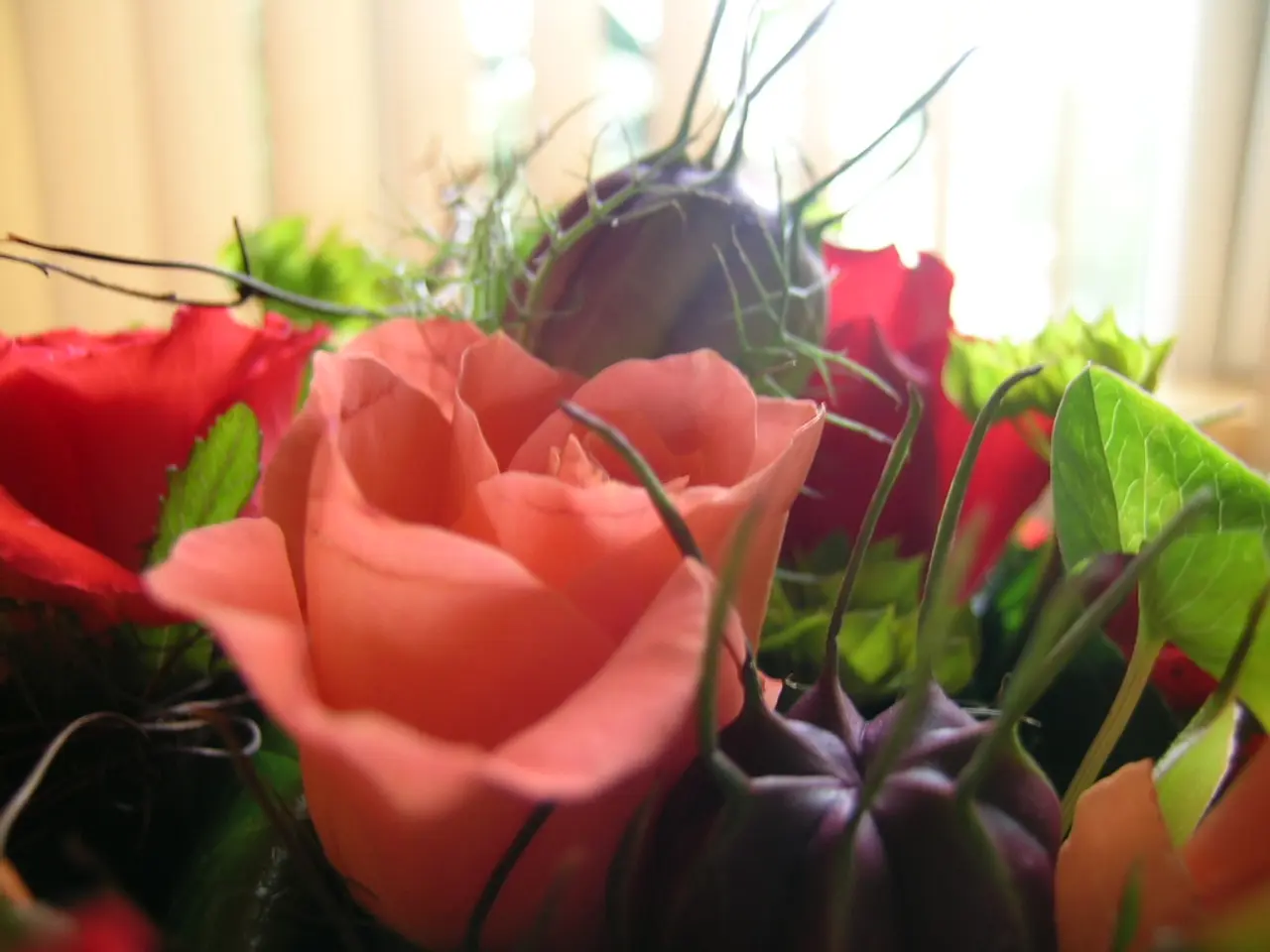Symptoms and issues in peach tree leaves
Peach tree leaf curl disease, caused by the fungus Taphrina deformans, can be a challenge for gardeners. However, effective organic methods can help manage this issue.
The key to controlling peach leaf curl lies in preventive measures and timely cultural practices.
Apply Copper or Sulfur-Based Fungicides
During the dormant season, spraying the tree with copper or sulfur-based fungicides is crucial. This should be done late in the autumn after leaf drop and again in early spring before buds break. These sprays prevent the fungus from infecting new leaves.
Keep the Tree Dry
The fungus requires moisture to infect leaf buds from around October to May. Protecting branches and buds from rain by using physical barriers like a DIY lean-to or plastic sheeting (with ventilation to allow pollinators) can significantly reduce disease incidence.
Pruning and Sanitation
Pruning affected branches and removing fallen leaves improves air circulation and removes diseased tissue, while cleaning up leaf debris reduces overwintering fungal spores.
Mulching and Watering
Mulching helps retain soil moisture, but only water the roots, not the canopy, to avoid wet conditions that favour fungal infection.
Avoiding Chemical Fungicides
Once symptoms appear, control is impossible. Preventive dormant sprays are critical.
These organic practices, emphasizing preventive copper/sulfur sprays timed in dormancy, moisture management, pruning, and sanitation, offer the most effective natural control of peach leaf curl disease.
Note that copper-based fungicides are broadly accepted in organic systems but must be applied according to label instructions regarding timing and dosage.
Additional Tips
- The fungus re-infects next season's buds, so it's essential to maintain these practices annually.
- Avoid over-feeding peach, nectarine, apricot, and almond trees with nitrogen fertiliser.
- Trees may recover sufficiently to make a second flush of growth, but in a weakened state, the flowers and fruit may fall off the tree.
- Premature falling of flowers and fruit may occur due to the fungus.
- Garden compost can be used as mulch around the base of these trees to maintain general health.
- Death of the trees may eventually result from the fungal infection, so prompt action is crucial.
- Infected leaves, flowers, and fruit should be removed as soon as they are seen, as the fungus survives on these fallen remains.
By following these organic methods, gardeners can help protect their peach, nectarine, apricot, and almond trees from peach leaf curl disease.
Maintaining a home-and-garden lifestyle with a focus on gardening includes adopting organic methods to control peach leaf curl disease on peach, nectarine, apricot, and almond trees. Key practices include applying copper or sulfur-based fungicides during dormancy, keeping the tree dry with physical barriers like lean-tos or plastic sheeting during the fungus's active period, pruning and removing diseased tissue, and using mulch to retain soil moisture while avoiding watering the canopy. Annual maintenance of these practices is essential for effective control of the disease.




